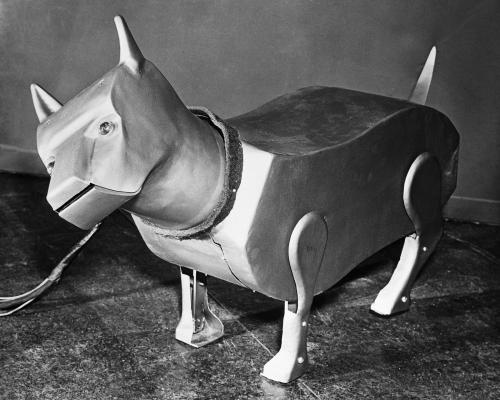Elektro el robot que sorprendió al mundo
At the New York World’s Fair in 1939, the Westinghouse Electric Company presented a spectacle that left everyone open-mouthed: a robot more than two meters tall that could move, talk and even smoke cigarettes. Its name was Elektro and it was one of the first attempts to create a functional humanoid.
Women also contributed to game design. A team led by Suzy M. Smith created Ms. Pac-Man, a game that redefined arcades and introduced a female lead in an industry dominated by male characters.
How did Elektro the robot work?
Although it sounds primitive today, in its day Elektro was a technological marvel. Its main features included:
- Imposing height: 2.1 meters tall, made of metal.
- “Human” voice: It responded to voice commands prerecorded on phonographs.
- Limited movements: He could raise his arms, turn his head and walk with assistance.
- Did he smoke cigarettes? Yes! He inhaled and exhaled smoke through a pneumatic system.
The impact of Elektro and its robotic “puppy dog”

Elektro not only amazed the public, but also influenced the development of robotics. He even had a “companion,” Sparko, a robotic dog that barked and wagged its tail.
Both were part of a publicity show to demonstrate the advances of electricity and automation in everyday life.
From Elektro to modern humanoid robots
🚀 1960s: WABOT-1, the first robot with autonomous mobility.
🤖 1986: Honda creates the first ASIMO, a robot capable of walking.
🎭 2016: Sophia, the first humanoid with citizenship.
🏃♂️ 2020s: Boston Dynamics’ Atlas, the robot that performs parkour
Where are humanoid robots headed?
Hoy, empresas como Tesla, Boston Dynamics y Engineered Arts están desarrollando robots humanoides con inteligencia artificial avanzada. Algunos pueden mantener conversaciones realistas, aprender de su entorno y realizar tareas complejas.
¿El futuro? Quizás pronto veamos humanoides integrados en la vida diaria… aunque ya no fumando cigarrillos. 😆
Xideral Team
